The Italian holiday of Ferragosto commemorates the 15th of August, when the Virgin Mary ascended, body and soul, into heavenly glory. With regard to the timely co-incidence of Christian miracles and pagan Roman celebrations, Ferragosto is no different. Augustus the Emperor declared the entire month designated to celebrations and festivals. I actually read that the 15th of August was the Emperor’s birthday. These days it’s hard to separate the sacred holiday of Ferragosto with the secular holiday of Ferie, when most businesses close for the annual summer holiday. Go ahead and ask anyone in Italy the meaning of Ferie, you’ll get answers ranging from the “annual holiday in Italy”, “the annunciation of the Virgin Mary” or “the government sanctioned period for businesses to be closed”. When we asked a restaurant manager near Marsala what his thoughts were on the true meaning of Ferie, he told us it signaled the end of summer and soon the autumn rains would begin. Everyone has a different answer, which is probably they way it’s been since the early Christians first confused the Romans.
And as for the decree of the Emperor Augustus that the entire month be filled with celebrations and festivals, well, why not? You can’t go too far in Italy without running into a festival of some kind. There are festivals all over the country; the opera seasons in Trieste, The Baths of Caracalla in Rome and the Roman Amphitheater of Verona, the Venice film festival, the medieval Palio in Siena and the renaissance festivals of the Veneto and Sicily, the jousting tournament of Ascoli Piceno in Le Marches, the Festival of the Madonna of the Snow in Rome commemorating a miraculous 4th century snowfall and the Palio del Golf, a rowing race between 13 villages along the coastline of Tuscany near La Spezia. There are the Festivals of the Sea and the of the miracle of the White Madonna in Liguria, the Festival of Candles in Sardinia, the decorated tractors of the wheat festival of Benevento, the barrel race around Montepulciano and the Escape of the Ox festival in the Tuscan town of Montefalco. And these are just a handful of the many. Every town, every village and every city neighborhood pulls out the decorations, dusts off the statues of their favorite saints and “presto”, it’s a celebration. I think the Emperor would be pleased.
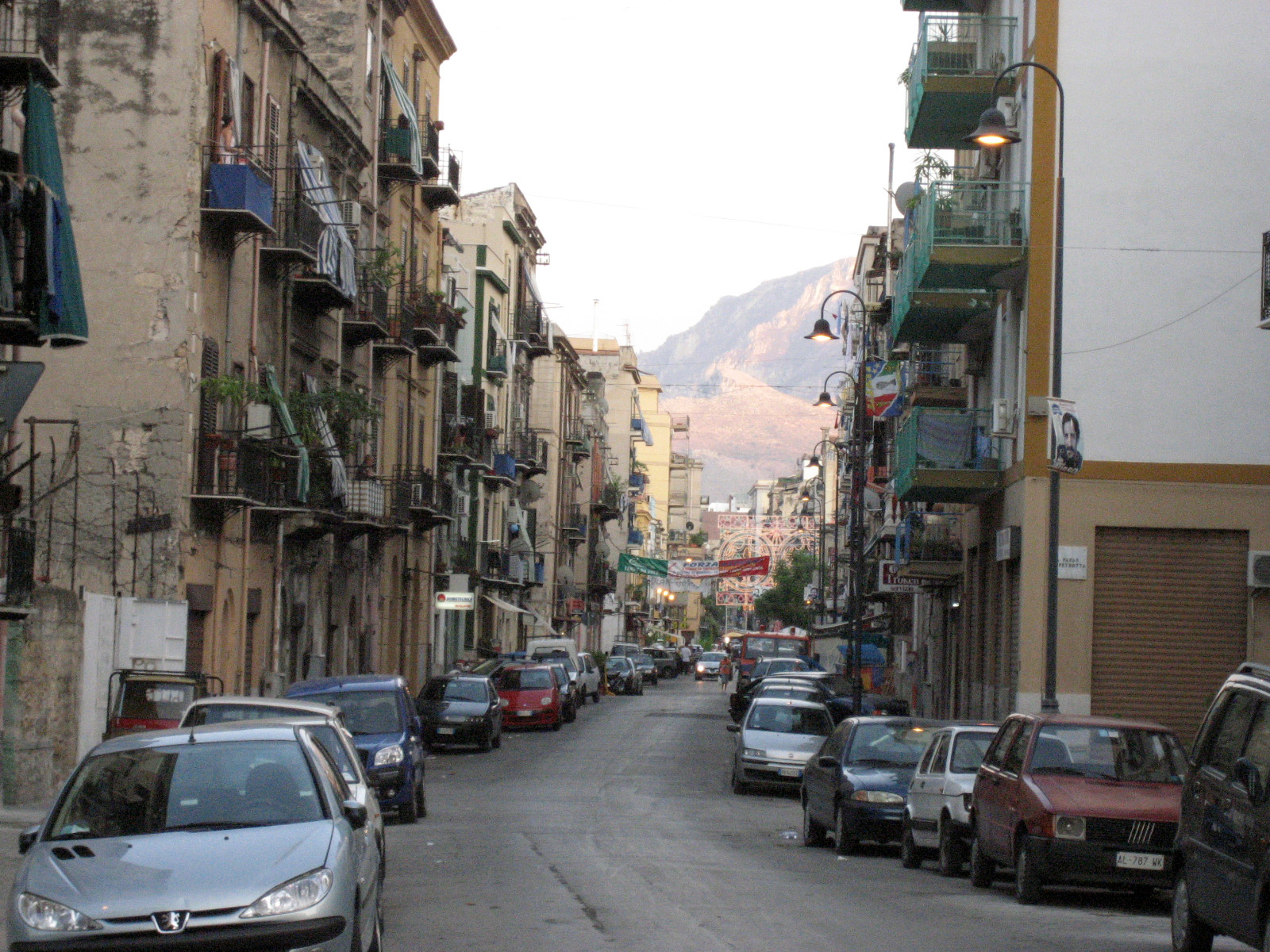
Palermo
When we arrived to the airport for our flight from Paris to Palermo, it Saturday, August 12th, 2006, the first day of the Ferragosto Holiday, it always begins on the weekend before the 15th. The airport terminal was filled parents with tired and odorous infant children in tow. Every check in window was blocked with strollers and baby back-packs. This wasn’t your average family visit to euro-DisneyWorld. No, much worse. This was a European summer family holiday; a consanguineal congress of parents, grand-parents, great grand-parents, uncles, aunts, cousins and probably a few people that just snuck in when nobody noticed. For 2-3 weeks they breathe, eat, talk, bathe, swim, sit and drink together, a conjoined clan of inseparable genes. And when it’s all over, they hit themselves in the head and ask “why do we do it?’ But guaranteed, next August, they’ll do it all over again.
No matter how long or short the flight, for me, traveling from one airport to another is always exhausting. I’m pretty certain that airports mix tranquilizing gas into their airflow in order to anesthetize the traveler anxiety. I always feel great when I walk into the terminal (a very appropriate name by the way) but within 20 minutes I’m doped up, wiped out and looking for the closest espresso stand or chocolate bar. And in these days of arriving 90 minutes early to the airport, there is a lot of time to get tranquilized.
We walked through the Duty-free shops, sat around and guessed which annoying children would be on our flight and waited for the bus to arrive to take us to the plane; in most European airports, a shuttle bus brings you out on the tarmac to the airplane. And yes, all of the obnoxious children we identified in the waiting room are on the bus. And lucky me, my seat on the Meridiana flight from Paris Charles de Gaulle to Palermo Punta Raisa is right next to the toilets, a short nose away from the long line of pooped pants waiting to be changed.
At first glance Palermo is pretty soiled and smelly, reminiscent of the plane trip. But after dusting off the travel fatigue, we became enchanted with this wild labyrinth of market places, pizzerias, harbors, parks and a mélange of Roman, Arab, Norman, Baroque and Bell’Arte architecture. I always like to use the example of the “ugly fruit”. Once you get past the thick unattractive skin, it’s all sweet and juicy inside.
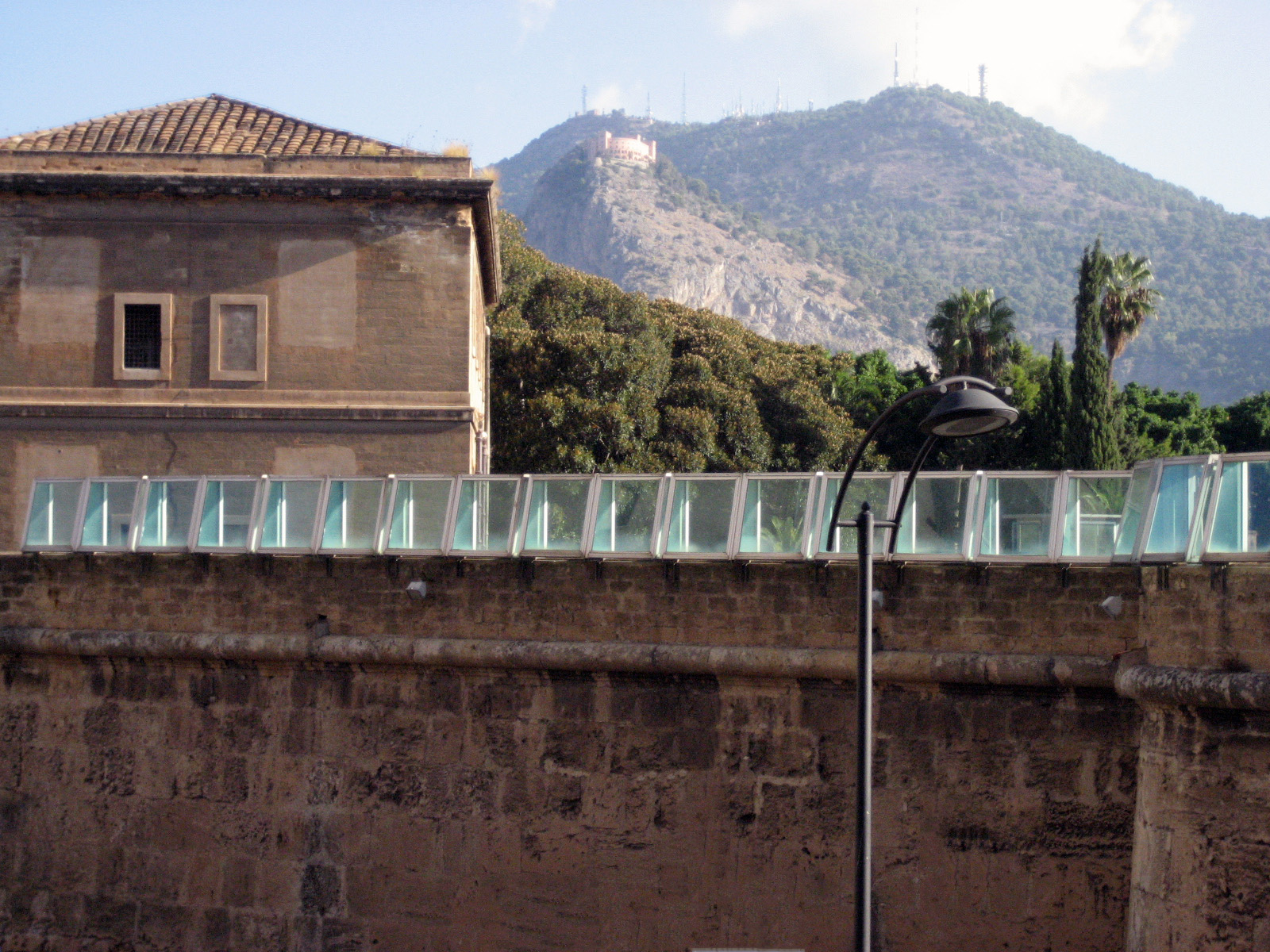 We booked a couple of nights at the Ucciardhome Hotel, directly across the street from the Ucciardhome prison, an old stone prison we thought to be closed and decommissioned. Boy, were we wrong. It’s one of the most notorious prisons in Italy with 3 security guards for every prisoner; fully operational and right in the middle of the city. It’s stories are filled with Mafia bosses and secret tunnels built during the 1980s when Judges Giovanni Falcone and Paolo Borsellino presided over the 1986 Maxi trials that put 360 mafioso behind bars. In 1992, the Mafia retaliated, but when Mafia boss Salvatore “Toto” Riina ordered the “hit” that killed both Falcone and Borsellino, all hell broke loose on the crime families. The reign of mafia control over Sicily had lost it’s grip and the outraged Sicilian crime fighters put hundreds more behind bars, including Riina. Both Falcone and Borsellino have since became symbols of the Sicilian fight against organized crime and their names currently preside over public buildings, bridges and the Palermo Airport. The old style of organized crime is definitely losing it’s control, but when greed and power is concerned, there’s usually new path to get back in, especially in Italia.
We booked a couple of nights at the Ucciardhome Hotel, directly across the street from the Ucciardhome prison, an old stone prison we thought to be closed and decommissioned. Boy, were we wrong. It’s one of the most notorious prisons in Italy with 3 security guards for every prisoner; fully operational and right in the middle of the city. It’s stories are filled with Mafia bosses and secret tunnels built during the 1980s when Judges Giovanni Falcone and Paolo Borsellino presided over the 1986 Maxi trials that put 360 mafioso behind bars. In 1992, the Mafia retaliated, but when Mafia boss Salvatore “Toto” Riina ordered the “hit” that killed both Falcone and Borsellino, all hell broke loose on the crime families. The reign of mafia control over Sicily had lost it’s grip and the outraged Sicilian crime fighters put hundreds more behind bars, including Riina. Both Falcone and Borsellino have since became symbols of the Sicilian fight against organized crime and their names currently preside over public buildings, bridges and the Palermo Airport. The old style of organized crime is definitely losing it’s control, but when greed and power is concerned, there’s usually new path to get back in, especially in Italia.
Finding the car at the Falcone Borsellino airport was easy. Finding the Ucciardhome hotel was a bit more challenging. Even with a map of Palermo, we managed to get lost more than a couple of times. Finally, we decided to stop at a gas station for directions. I know this is a purely 1950’s/1960’s American idiosyncrasy. It’s pretty unlikely in these days of long commutes and part time jobs, that gas station attendants know anything about the layout of the locale. But nonetheless, we pulled over and, in my best Italian, I asked the attendant, “can you give me directions to the Ucciardhome Prison?” Stunned for a minute, he responded (in his best Italian) “why do you want to go there?” I explained our hotel was across the street. He smiled, revealing his three remaining teeth and gave perfect instructions.
We’ve read the horror stories of driving in Palermo, but we arrived on Saturday, August 12th, the 1st day of “Ferie”. Everyone had just left the city. There was no traffic. I don’t know how many people have ever written or said this.
Sicily has a very complicated history, ranging from Greeks and Phoenicians to Romans, Carthaginians, Arabs, Normans, French, Spanish, English, German, Italian royalists, Italian loyalists, Italian separatists, Fascists, Democrats and of course, the Mafia; although it’s easier to spot what looks like a Mafioso in New York than here in Palermo. Since everything was closed for the first day of “Ferie”, it was a great way to get a feel for this city as one amazingly beautiful neighborhood flowed into struggling slum. It was hot…sweaty hot…shorts and t-shirt hot… gelato and granita slurping hot. We’d just come from a very cold 4 days in Paris, and we were loving it.
We walked down the Via Maqueda, by the Garibaldi and Teatro Massimo Opera houses and on through the famous baroque buildings of the Quattro Canti, the heart and center of Palermo. We walked through the Kalsa and along the harbor to the 14th century Steri Palace and the beautiful Piazza Marina, a vibrant square filled with life and wonderful restaurants that once played the host to the inquisition executions of the 17th century.
We stopped for a lunch of fresh seafood close to the 15th century church of Santa Maria della Catena, named for the large chain (catena) that once protected the harbor from Turkish corsair pirates. We walked along the Corso Vittorio Emanuale and to the Palazzo dei Normanni, the residence of King Roger II in the 12th century; built it on the ruins of Emir Ibn Hamud’s 9th century palace. The Palace has been renovated a lot since the 12th century, in fact it’s currently houses the Sicilian Regional assembly. But there are still a few rooms of beautiful mosaics that have been historically preserved and well worth a look.
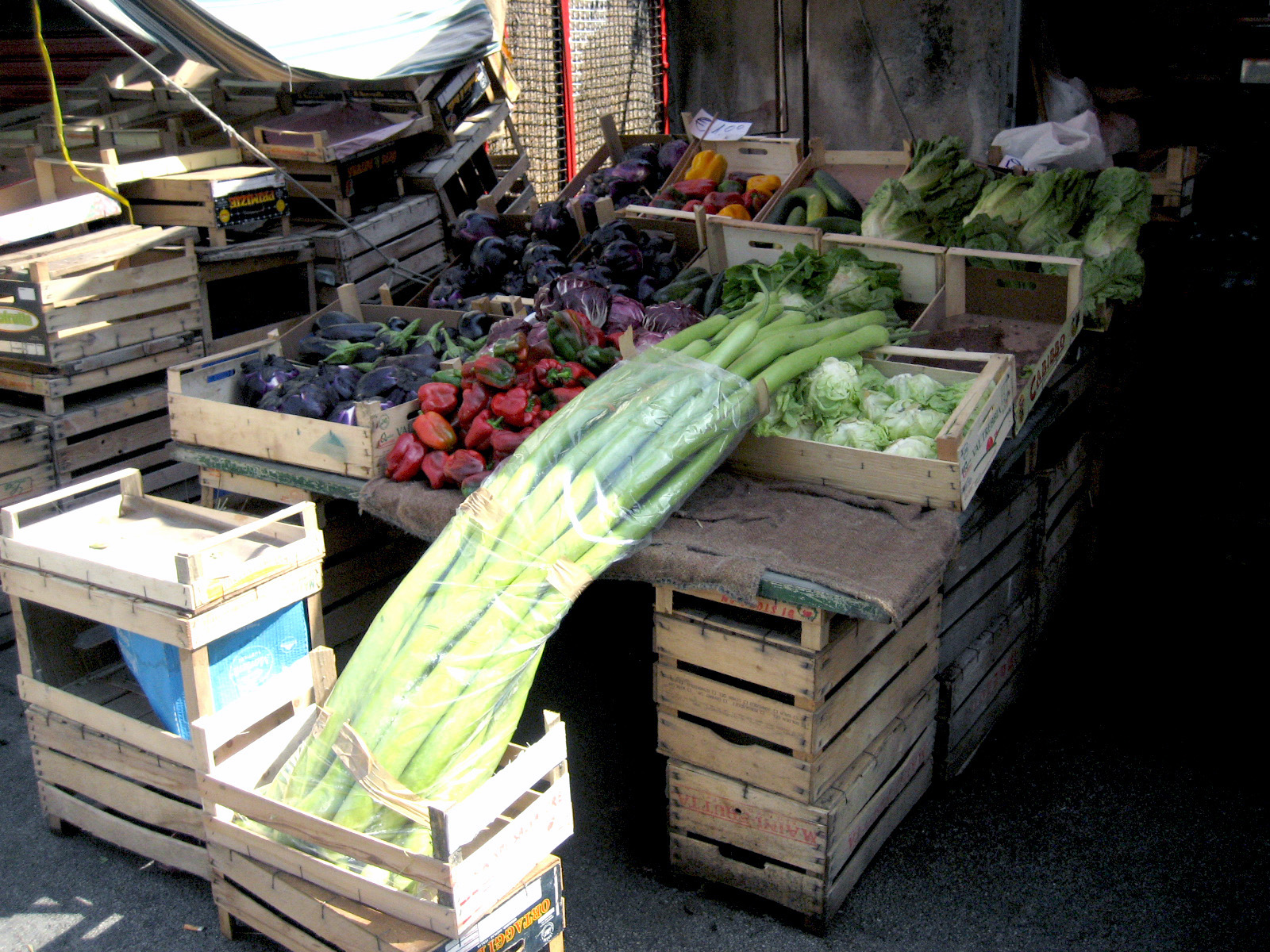 We walked into one of the neighborhoods near the Via Libertà and while admiring a shrine to some Sicilian saint , an old man noticed my 3 day beard and asked me if I’d join him “ a farsi la barba” for a shave at the local barbershop. Unfortunately, I refused. It was a pretty nasty neighborhood and all I could think of was Sweeny Todd. In retrospect, I should have gone with him. It would have been a great story, and probably a great shave. I learned pretty soon on that all the stories of fear associated with Sicily were all completely over exaggerated. This is one of the most hospitable and friendly places we’ve ever been.
We walked into one of the neighborhoods near the Via Libertà and while admiring a shrine to some Sicilian saint , an old man noticed my 3 day beard and asked me if I’d join him “ a farsi la barba” for a shave at the local barbershop. Unfortunately, I refused. It was a pretty nasty neighborhood and all I could think of was Sweeny Todd. In retrospect, I should have gone with him. It would have been a great story, and probably a great shave. I learned pretty soon on that all the stories of fear associated with Sicily were all completely over exaggerated. This is one of the most hospitable and friendly places we’ve ever been.
Our hotel (as well as the notorious prison) also happens to be 5 blocks from the ultra trendy shopping district of Via Libertà, and another 4 blocks from the old neighborhood market of the Via Principe di Scordia. This is a pretty grungy neighborhood but it has one of Palermo’s most amazing outdoor marketplaces. Butcher shops are filled with fresh beef, lamb, goat and fowl. Raw oyster stalls and fish wagons are selling either fresh fish or alla brace (freshly cooked on the grill). Spice wagons are decorated with large round pans of exotic smells and colors and fruit carts are filled with table grapes, apples, figs, lemons and tarocchi (blood oranges). Vegetable carts are filled with 5’ long cucuzza lunga zucchini, 3 sizes of artichokes, 6 different types of Sicilian tomatoes, green and red peppers, and little sea snails called L’umiche babbaluci. For some reason beyond my comprehension, these little sea snails are sold from the vegetable stands and not the fish wagons, but the locals buy ‘em by the sacks and eat ‘em like snacks. There are pastry shops soaking with “canoli” and other ricotta cream filled delights, and beautiful “frutta di Martorana”, realistic fruit reproductions made of marzipan almond paste by the very talented nuns of the Martorana Convent in Palermo, who ’ve been creating these pieces of edible art since the 12th century.
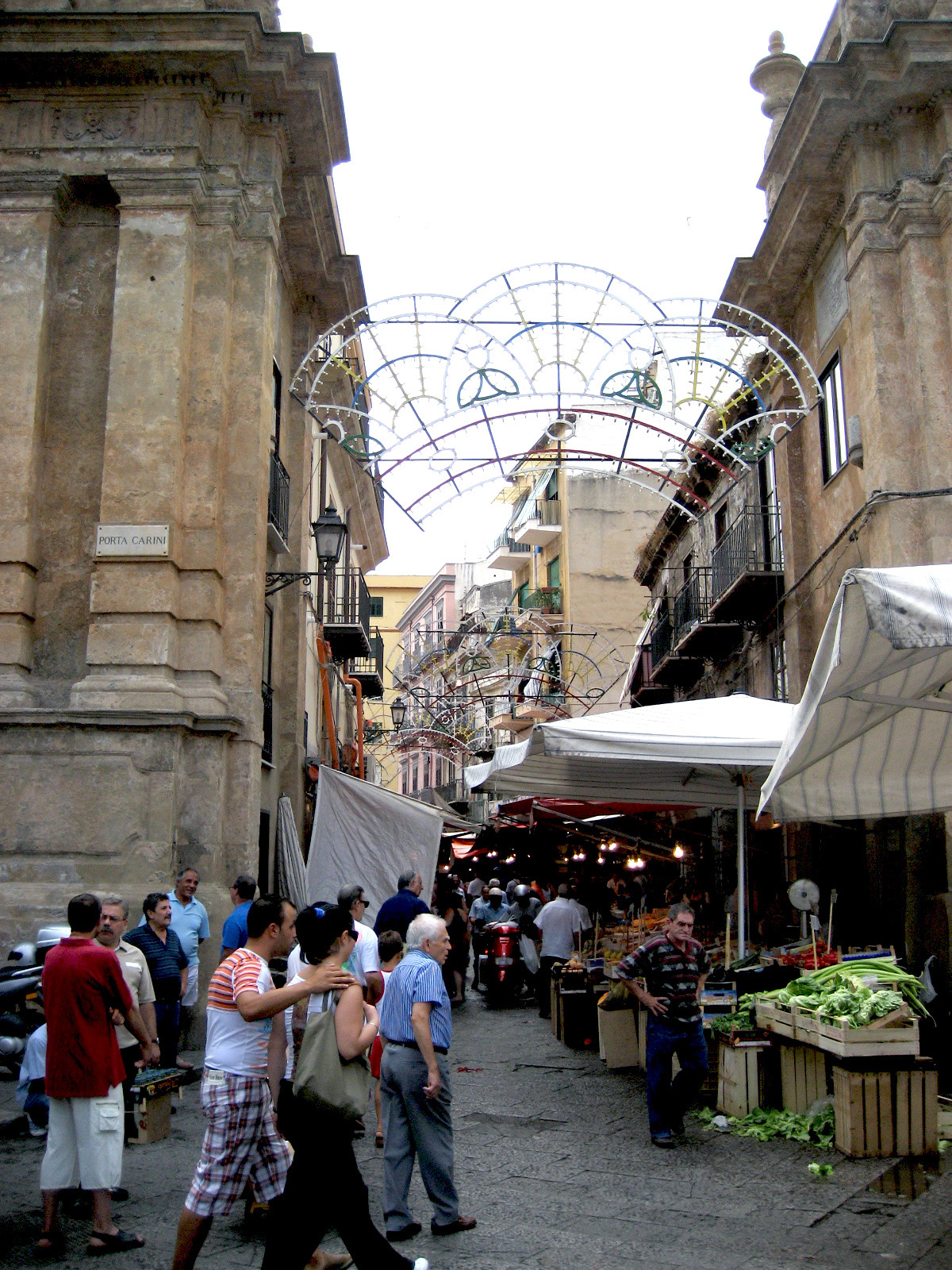
There are bakeries selling fresh breads of all sizes and shapes. The cheese shops sell an abundance of fresh ricotta and mozzarella di bufala to aged sheep’s milk pecorino, saffron flavored piacentinu, 30 pound cylinders of canestrato, smoked provolone and 8 month aged caciocavallo, a favorite topping for pasta and pizza and a great compliment to hearty Sicilian red wines.
In Sicily, there is no shortage of wine. You can buy a good bottle at any grocery store. Nero d’Avola is the most famous of the red varietals and the wines coming from Planeta, Tasca d’Almerita and other smaller houses are getting a lot of notice from serious oenophiles in many international markets. We were “pazzo” for a 60% Nero d’Avola- 40% Cabernet Sauvingnon blend from Tasca d’Almerita called “Cygnus”. For those who want a good, inexpensive, red wine, check out “Corvo” from around 4-5 euros a bottle. By the way, Corvo, made by the Salaparuta winery, is owned by the Sicilian government. Now there’s a novel idea, really good government made wine. Only in Italy.
And for those who don’t want to drink wine on these hot days, no problem; delicious ice cold Nastro d’Azurro beer flows from every café and bar along the street.
There are outdoor markets all across Palermo. In fact, they’ve been part of Sicilian life since the 9th century when the island was under the rule of the Arab Moors from North Africa. If you want to get into the culture and life of Sicily, this is the place to go. If you’ve ever visited an Arab country, you’ll definitely recognize the similarity to an Arab “souk”. Palermo is not a very large city but there are at least 4-5 of these large marketplaces every day of the week except Wednesday. Some of them have now extended into a dry goods market with clothing, tools and toys.
Life is Palermo is centered around the market. The Palmeritani shop for groceries to cook later or just grab a spot at the oyster bar and slurp back a few fresh ones. They visit their friends and talk politics or soccer or local scandals. The Italians love scandals and will go out of their way to create one if things are too complacent.
The locals who live along the marketplace hang out in the street, in parked cars and cafés. They lean out the windows and outside the doorways, entire families from grandparents to babies to household cats to old decaying dogs barely strong enough to sit up escape the intense heat of their apartments for the intense heat of the streets.
 On our walk each day through the market of Via Principe di Scordia, we crossed paths with an old crusty guard goose, a descendant from an ancient, evil Sicilian goddess who would just as easily peck our eyes out as eat a bread crumb. We had to give her a wide berth every time we walked by, at least twice a day. In our final day in Palermo, we got up the nerve to ask an old woman what was the name of the goose. “Morta” (death), she replied. “Can I make a photo of Morta?” I asked and she nodded her head. The goose still kept me across the street but I was still able to get a good shot of her and her “red goose eyes from hell”.
On our walk each day through the market of Via Principe di Scordia, we crossed paths with an old crusty guard goose, a descendant from an ancient, evil Sicilian goddess who would just as easily peck our eyes out as eat a bread crumb. We had to give her a wide berth every time we walked by, at least twice a day. In our final day in Palermo, we got up the nerve to ask an old woman what was the name of the goose. “Morta” (death), she replied. “Can I make a photo of Morta?” I asked and she nodded her head. The goose still kept me across the street but I was still able to get a good shot of her and her “red goose eyes from hell”.
The archeological museum gave us a peek at some of the best pieces removed from the archeological on the island. The greatest treasures always end up somewhere else. We saw anchors from Cartaginian war ships, ancient, decorated stone bath tubs, and some very impressive stone reliefs (metopes) from the temples at Selinus (Selinunte); Perseus slaying Medusa, Artemis and Acteon (being torn apart by wild dogs), the marriage of Zeus and Hera and the Hercules dangling the laughing Cercopes twins from a pole over his shoulder.
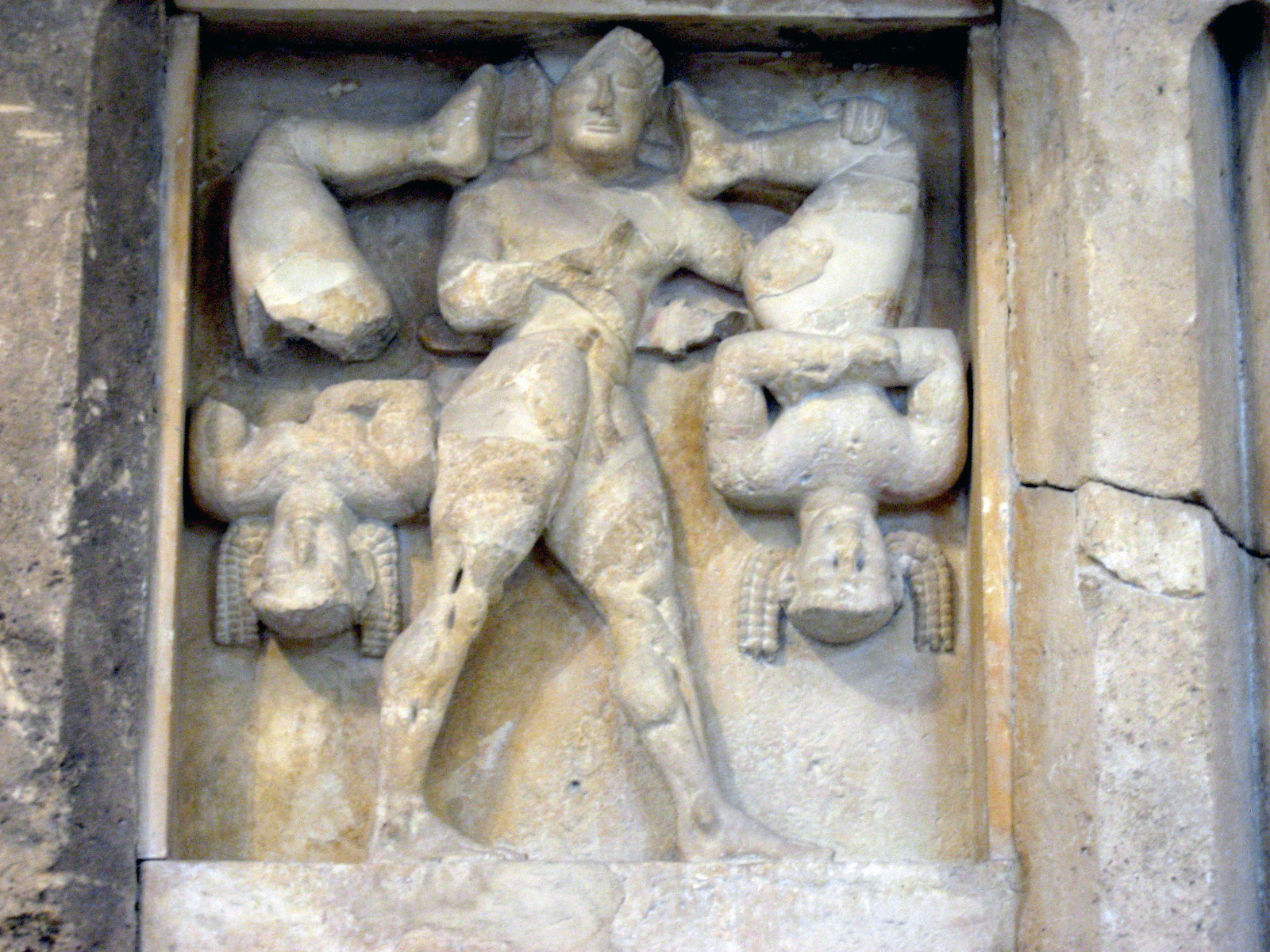 I never knew this story and so I’ll pass it along. The Kerkope twins turned themselves into flies and buzzed the sleeping Hercules, which obviously pissed him off. And so he captured them upside down as punishment. But as the twins were suspended from the pole they started to laugh. When the twins were very young, their mother had always warned them to beware of “melampygos”, old black bottom. All of a sudden they found themselves upside down, staring into the mighty bum of the mighty Hercules, his lion skin barely giving him any cover. There it was, so leathery, sunburned and scorched from fighting fire-breathing monsters. All they could think of was “old black bottom”. When Hercules asked the Kerkopes what was so funny, they told him. Hercules thought it was pretty funny too and let them go.
I never knew this story and so I’ll pass it along. The Kerkope twins turned themselves into flies and buzzed the sleeping Hercules, which obviously pissed him off. And so he captured them upside down as punishment. But as the twins were suspended from the pole they started to laugh. When the twins were very young, their mother had always warned them to beware of “melampygos”, old black bottom. All of a sudden they found themselves upside down, staring into the mighty bum of the mighty Hercules, his lion skin barely giving him any cover. There it was, so leathery, sunburned and scorched from fighting fire-breathing monsters. All they could think of was “old black bottom”. When Hercules asked the Kerkopes what was so funny, they told him. Hercules thought it was pretty funny too and let them go.
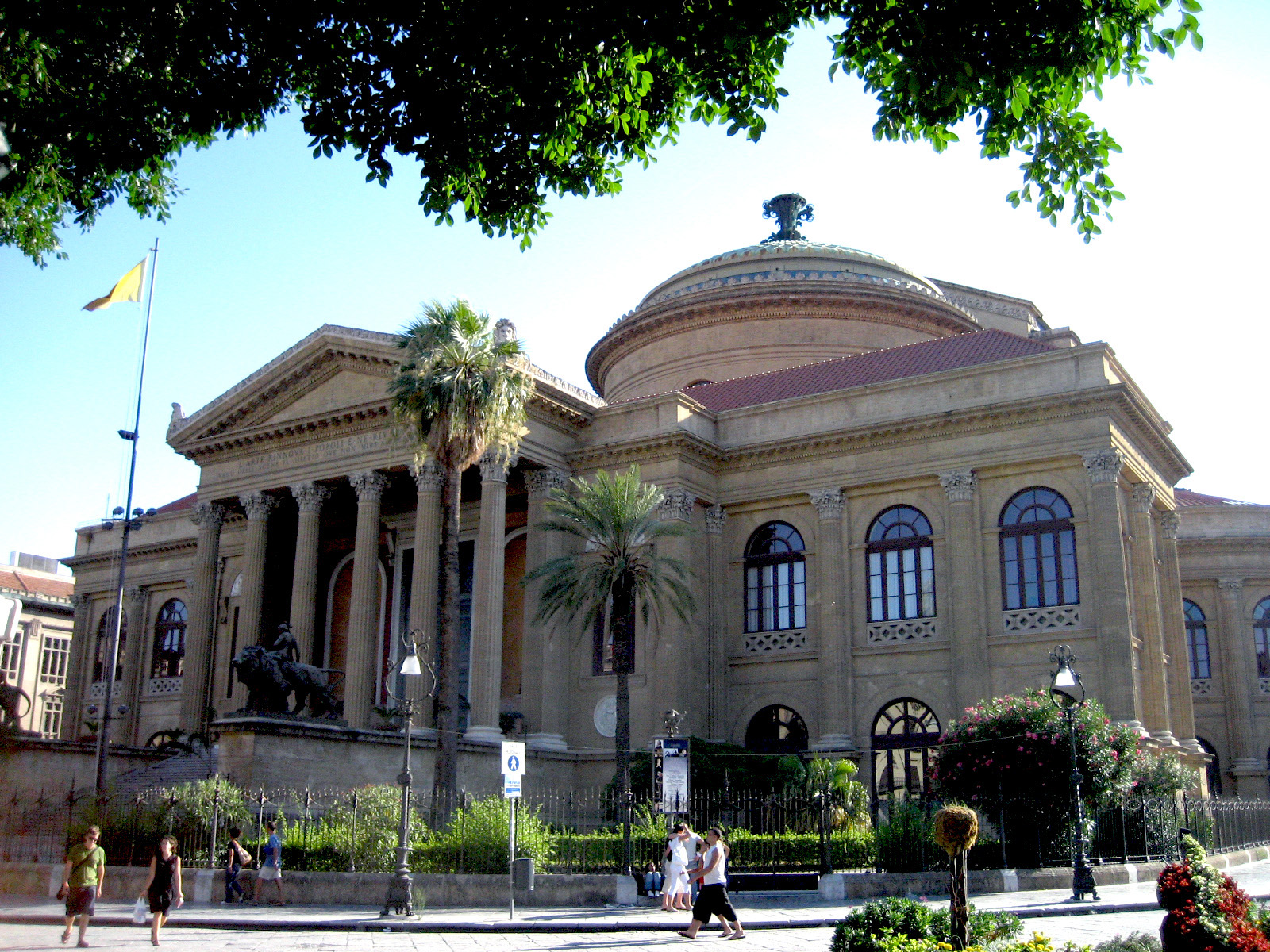 By 10am it was already 94°F and we were once again facing the Teatro Massimo, the second largest theatre in Europe. The last time we were here it was closed, but according to the “Visit Hours” it was supposed to be open. We thought they forgot to update the information. After circling around the building, looking for any form of life, we saw an open door. And inside the open doorway we saw a man dressed in what seemed to be a fireman’s uniform. I stuck me head through the bars of the gate and called out to him, “signor, è aperto il teatro?”. He came out with his friend and explained to us that the theatre was closed today but we should comeback on Tuesday. We told him we had to leave Palermo today and it was sad we wouldn’t see the theatre because we worked in the theatre in America. This was our only opportunity. Then there was the silence. Then they whispered something to each other in very fast Sicilian dialect. Then they smiled at us and invited us in for a private showing. They took us everywhere, from the small ballet room, to the rotunda where singers would play off the echo of their own voices, to the regal private boxes plush with red velvet, to a tuck and roll red velvet private elevator they referred to as the “stanza di sexy”, to the motorized orchestra pit that easily lifted 40 musicians with instruments and on to the backstage full of scenery, rigging and controls.
By 10am it was already 94°F and we were once again facing the Teatro Massimo, the second largest theatre in Europe. The last time we were here it was closed, but according to the “Visit Hours” it was supposed to be open. We thought they forgot to update the information. After circling around the building, looking for any form of life, we saw an open door. And inside the open doorway we saw a man dressed in what seemed to be a fireman’s uniform. I stuck me head through the bars of the gate and called out to him, “signor, è aperto il teatro?”. He came out with his friend and explained to us that the theatre was closed today but we should comeback on Tuesday. We told him we had to leave Palermo today and it was sad we wouldn’t see the theatre because we worked in the theatre in America. This was our only opportunity. Then there was the silence. Then they whispered something to each other in very fast Sicilian dialect. Then they smiled at us and invited us in for a private showing. They took us everywhere, from the small ballet room, to the rotunda where singers would play off the echo of their own voices, to the regal private boxes plush with red velvet, to a tuck and roll red velvet private elevator they referred to as the “stanza di sexy”, to the motorized orchestra pit that easily lifted 40 musicians with instruments and on to the backstage full of scenery, rigging and controls.
According to one legend, in 1174, at age 20, William the Good, son of William the Bad, had a dream that the Virgin Mary revealed to him a great treasure in the hilltown of Monreale, east of Palermo. In return for finding the treasure, he promised to build the biggest cathedral the treasure could buy; minus his administrative costs, of course. It was a great story and a reasonable explanation for spending so much money on the Cathedral.
In actuality, William probably just wanted to impress his subjects with the power and wealth of his monarchy. There is actually a mosaic of King William receiving his crown from none other than Jesus Christ, himself.
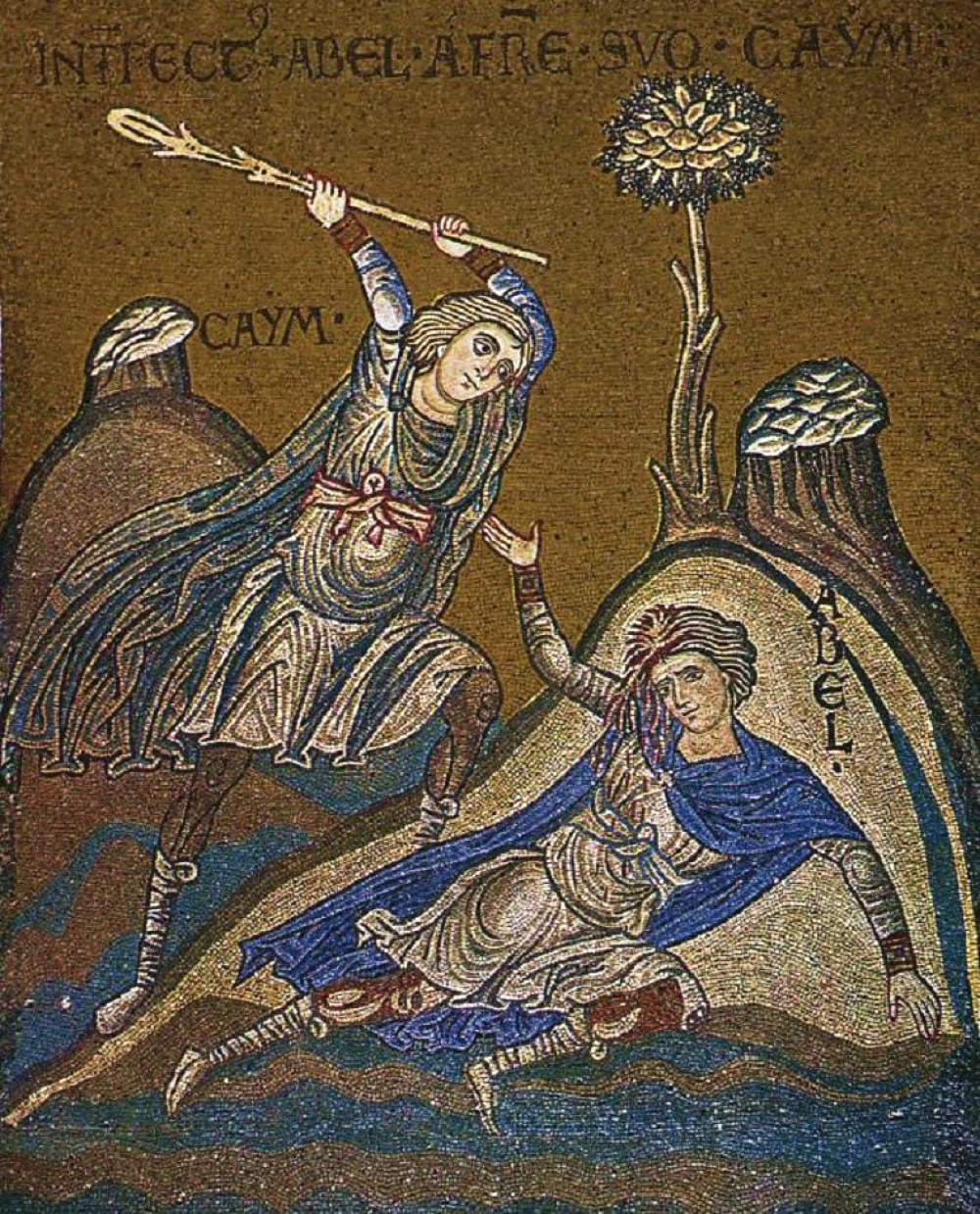 The Monreale Cathedral has more mosaic tiles than St Mark’s Cathedral in Venice, 130 individual scenes depicting biblical and other religious personalities. Mosaics of the old testament on one side and the new testament on the other. Mosiacs of Jesus and the Apostles and an array of Saints. Even Sir Thomas Beckett (now known as Saint Thomas Beckett), the archbishop murdered by King Henry II of England makes an appearance on the tiled walls. William the Good’s wife, Joan of England knew Sir Thomas back in her youth when she was the youngest daughter of Henry II and Eleanor of Acquitaine, and the favorite sister of Richard the Lionhearted.
The Monreale Cathedral has more mosaic tiles than St Mark’s Cathedral in Venice, 130 individual scenes depicting biblical and other religious personalities. Mosaics of the old testament on one side and the new testament on the other. Mosiacs of Jesus and the Apostles and an array of Saints. Even Sir Thomas Beckett (now known as Saint Thomas Beckett), the archbishop murdered by King Henry II of England makes an appearance on the tiled walls. William the Good’s wife, Joan of England knew Sir Thomas back in her youth when she was the youngest daughter of Henry II and Eleanor of Acquitaine, and the favorite sister of Richard the Lionhearted.
Admission to the Cathedral is free. However, if you want to take a walk around the cloistered garden, that’s another story. To see 6,340 square meters of gold mosaic tiles, there is no charge. To walk around 26 arches supported by 52 columns, it’s 6 euros each. We’re still scratching our heads trying to figure this one out.
From Monreale, we headed west towards Tràpani and the medieval hillside village of Érice. As the story goes (and I believe every word of it), Cronos (father of Zeus) cut off the genitals of his father, Uranus, with a sickle and then threw the blade into the Mediterranean Sea where it grew into what is now the spit of land called Tràpani. Looking down at Trapni, it really does look like a sickle blade. The fallen enriched DNA genitals of Uranus gave birth to Erycina, although other versions have Erycina being born from the foam crest of the waves. Erycina is known as Aphrodite in most other parts of the world. Here, hanging from the mountains overlooking Trapani on the western side of Sicily, many believe the town of Èrice was named for Erycina.
Érice was founded by the Elymians (more about them later). Their temple to Erycina was one of the most famous of the ancient world. Virgil even mentions it in the Aeneid. Everyone who came here (Carthagineans, Romans, Arabs, Normans, even Mussolini) felt some kind of religious presence here, although the Phoenicians, Greeks, and Roman senators here on holiday came for the very talented “Hierodules”, the sacred prostitutes from Temple of Venus Erucina. Both the temple and the Hierodules were gone when we got there.
It’s a typical small Italian medieval hill town, suspended from a high cliff with winding cobblestone streets. You can get to Érice by a funicular from Tràpani but we decided to make the climb around the switchback hairpin turns and in through the village gate, barely wide enough for the car. By the scrapes we saw on the rocks along the gateway, it was apparently too narrow for SUV, camper vans and larger vehicles.
 Selinunte – an ancient seaside city with no defense
Selinunte – an ancient seaside city with no defense
As a nation of the sea, the ancient Greeks of Magna Grecia (the 7th century BC colonial expansion of ancient Greece in Sicily) seemed to build a lot of their cities so they’d look fabulous to arriving sailing ships. Selinunte is an early example of the seaside city, built around 650 BC. It was a good idea in times of peace, but around 450 BC things got complicated. In 409 BC, the Elymians, (remember them from Érice) formed an alliance with the Carthaginians to the south. With 100,000 troops and tall siege weapons, they wiped out the population of old Selinus in 9 days; killing more than 16,000 and selling the rest into slavery.
Eventually, earthquakes finished off the city, pulling it down into neatly tumbled piles of rubble; columns, capitals and pediments in perfect alignment, like segmented grey snakes of stone. Two of the temples were reconstructed in the 1920’s, but nobody really knows how accurate they are. After all, there are a lot of pieces lying around, and they all look alike. But seeing them standing vertical again is pretty impressive.
 Segesta – Fool you once, shame on you. Fool you twice, shame on you again
Segesta – Fool you once, shame on you. Fool you twice, shame on you again
The city of Egesta (the Romans put the S in front of it for some unknown reason) was founded in the 12th century BC by a local king named Acestes (or Egestus) along with refugees of the Trojan war and their leader, Aneas, the Trojan warrior who carried his father on his back and eventually discovered Rome.
It took a few years, but the newly settle Trojans changed their name to the Elymians, learned how to fit into the Greek world, built a few cities, farmed some land and developed a real hatred for the people of Selinus to the south. Border conflicts went on for years, but when Selinus joined forces with Siracusa (Syracuse), the Elymians needed to find an even bigger partner.
In a story almost as devious and clever as the Trojan horse, they sent an emissary to Athens around 450 BC, offering a mutual self-help alliance. You help us defeat Selinus and Syracuse and we’ll give you lots of loot. The bragged on and on about the riches back in Egesta. Athens was hooked and agreed to make a visit to check out the claims. The crafty Elymians gathered up valuables from every place they could find; gold, silver and jewels from Érice, Tràpani and Egesta and as the Athenian emissaries left one of the houses stuffed with unbelievable wealth, the Elymians kept them in the street while others moved the loot out of one house and into the next, just moments before the Athenians entered.
The Elymians came up with enough money to pay for about 60 ships with crew for one month, but the Athenians were so impressed with getting the rest of the island’s wealth, they came through with the rest; over 130 large ships, over 6,000 warriors. The war began in 415 BC. By the time the Athenian troops were defeated by Syracuse in 413 BC, their (Athenian) forces had exceeded 10,000.
The main attraction of Segesta is one of the most beautifully preserved temples of the ancient world. There are many who believe the temple was built as part of the elaborate scam to impress the Athenians. Although it looks like an Athenian style temple, it also looks like it was never finished; no decoration, no holes for roof attachments, the steps were never finished. It would seem that after the Athenians left, work on the temple ended.
The story of the Elymians goes on for another 250 years or so. Dionysius of Syracuse defeated them in 397 BC, but they managed to rise back again only to be defeated in 307 BC by the Siracusa Tyrant and self imposed King of Sicily, Agathocles, who sold most of the population into slavery. Somehow, however, the Elymians survived. When the Romans conquered Sicily in the 3rd century BC, the Elymians (or what was left of the tribe) convinced the Romans that since they were both descended from Aneas, they were cousins. Rome, always happy to find relations, just seems to let them alone and eventually they all just disappeared. Or did they? Some say they all moved a little further south to Castellammare del Golfo.
 Agregento or Akragas – the bigger it is, the louder the noise it makes when it falls
Agregento or Akragas – the bigger it is, the louder the noise it makes when it falls
Ancient Akragas was one of the largest cities of ancient Magna Grecia, maybe one of the larges cities of the ancient world.
Our hotel was about 5 km down towards the beach where the sea breezes cool the morning but by the time we hit the archeological park, the temperature climbed to around 108° F with no shade. why do these ancient cities never have any shade?
This was one hot sweaty day; the burial catacombs were closed, the Temple of Concordia is currently hiding under scaffolding; the temple of Hercules. also under scaffolding. After another 40 minute walk, what we thought to be the Archeological museum turned out to be a small concert hall in the opposite direction. They need better road signs.
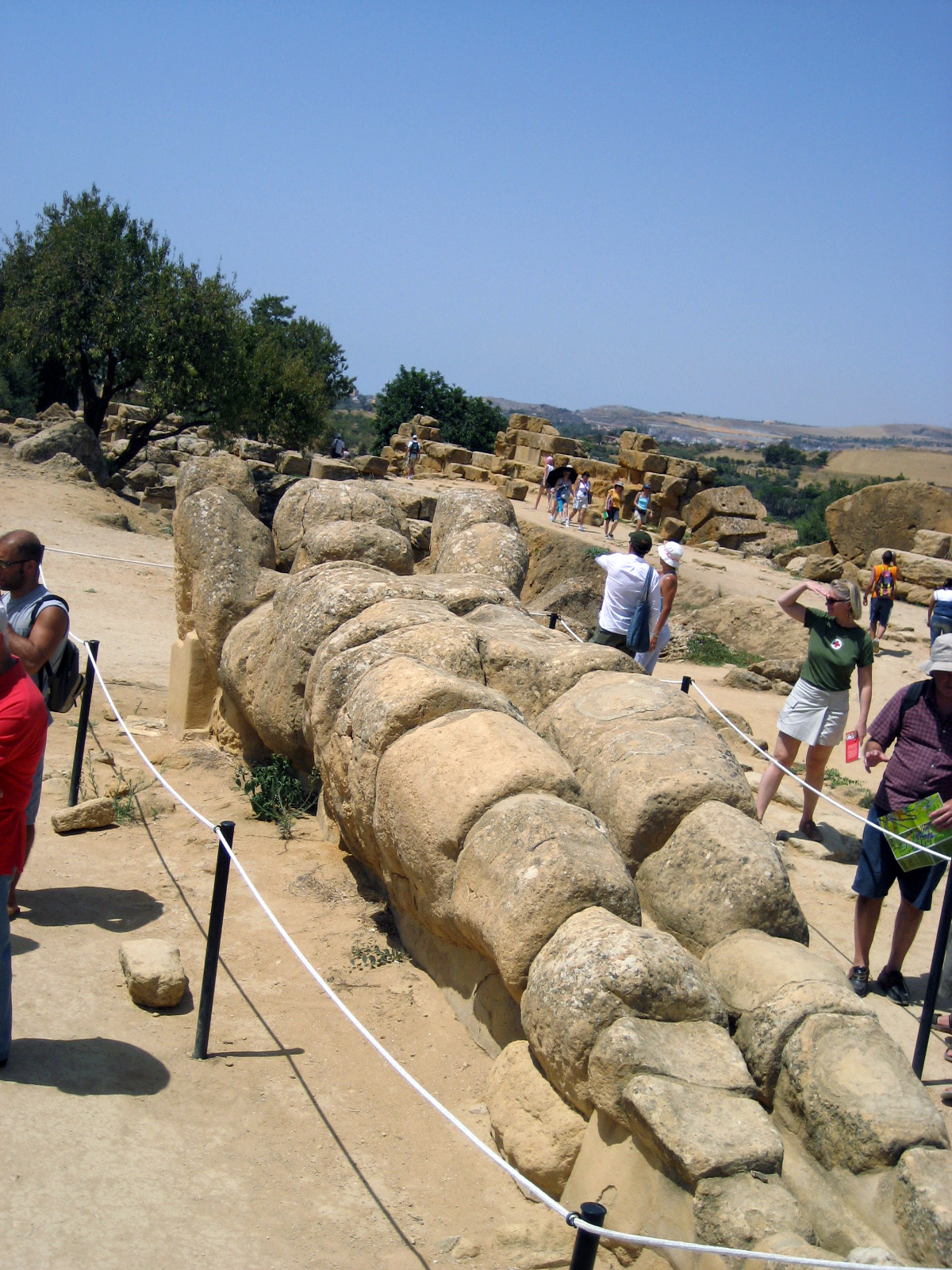 The Temple of Zeus was once the largest Temple in all of ancient Greece, measuring 378 ft x 278 ft by 100 ft tall. I guess the Akragans thought if they built it big enough, Zeus, himself, might actually come for a visit. We joked that Zeus was probably 105’ tall and was so pissed off he sent an earthquake down to destroy it. The remains of the temple are scattered everywhere. Any attempt to put it back together again would be purely speculation and quite ridiculous.
The Temple of Zeus was once the largest Temple in all of ancient Greece, measuring 378 ft x 278 ft by 100 ft tall. I guess the Akragans thought if they built it big enough, Zeus, himself, might actually come for a visit. We joked that Zeus was probably 105’ tall and was so pissed off he sent an earthquake down to destroy it. The remains of the temple are scattered everywhere. Any attempt to put it back together again would be purely speculation and quite ridiculous.
You can see the size of one of the telemone statues (assembled on the ground to the right). These statues (less than1/3 the overall height) supported just the lower section of the of the temple of Zeus.
An amazing story
Dropping off the rental car.. no problem. Finding the Wind Jet Airlines window.. no problem. Finding our that our 2:35pm flight to Rome was CANCELLED!!…BIG PROBLEM.
Apparently not all Italians take 2 weeks for the Ferie holiday and all the one-weekers were flying back home. The agent at the Wind Jet office told they attempted to call everyone but the only phone number they had for us was in San Francisco.
We tried every other flight to Rome. Alitalia – Sold out. AirFrance – Sold out. Air One – Sold out and all of them had at least 20 people on the waiting list. We tried to get on a flight to Pisa, thinking we’d take the train the rest of the way to Rome. Sold out. The Wind jet agent, Signor Martesse told us there was another Wind Jet flight at 8:30pm but he didn’t know if we could get on it. It was already sold out and it was now only 2pm. Who knew what would happen in 6hrs. We explained that waiting in a hot (non air conditioned) airport for 6hrs only to find out we couldn’t get on the flight was not very encouraging. He understood. “Come back at 7:30pm,” he told us. “I’ll do my best. I think I can get you on this flight. I am more than 90% sure of it.” We left the office optimistic. In any other country they would have shrugged and said, “we’re sorry but there are more flights tomorrow.”
We ate some lunch, 30 minutes; walked through the shops; 20 minutes (Palermo is a pretty small airport) and then tried to get into the air conditioned airport lounges. No luck at the GESAP VIP lounge. The agent looked up from her enormous volume of the Chronicles of Narnia and told us “only GESAP members allowed.” Gretchen pulled out her Red Carpet Club membership and the woman smiled and told us to try the Alitalia lounge. The agent there looked at the United club card and had the same reaction, telling us to try the GESAP lounge. However, Alitalia is partnered with Delta and AirFrance. Gretchen pulled out her AirFrance mileage card and the woman smiled. It close enough she said, understanding that we could be in the airport for at least another 6 hrs.
At last, we were cool and comfortable. We had plenty of cold fresh water, coffee and juices, cookies, chips, clean toilets and wireless internet. The hours flew by, 30 minute friendships with traveling families stopping in at the lounge before their flight to (you guessed it) Rome. Then, at around 6:15pm we decided to check up on Signor Martesse. He gave us a sincere and welcoming smile but immediately told us there was a problem. But as he was just about to explain the situation, a young, handsome (blond, blue eyed) pilot asked him what was going on. Martesse explained that our flight was cancelled and he couldn’t get us on another flight to Rome. The pilot told him not to worry. He was the Captain of the 8:30pm flight. And with that, he turned to us and introduced himself, “Hello, my name is Allesandro. I am the Captain of the flight to Rome. I know the flight is full but you can fly with me. However, the only seats available are in the cockpit. I hope this is all right with you.” We thought he was joking.
With security as thought as it is these days, there was no way they were going to let us in the cockpit to fly to Rome. We laughed and said it was a great idea but were sure he was kidding. “No,” he said. “I am serious. I am the Captain and I can do whatever I want.” And within 15 minutes, we were adopted by the entire Wind Jet flight crew. Signor Martesse left and returned 10 minutes later with our boarding passes, the seating assignment read “JPS” for jumpseat. We were escorted through security (with all of our bags), escorted to the plane way before the passengers boarded. The flight attendants gave us a couple of seats while they prepared the plane and then, we were escorted to two seats in the cockpit directly behind Allessandro and his co-pilot. Neither of us had ever been in the cockpit of a commercial airline but there we were, strapped in and taking off with the best view you could have from an airbus 320. They taught us the workings of the controls, and as night enveloped the skies over southern Italy, we stared off into the sunlight horizon and watched the shooting stars of Saint Lorenzo fall into the Mediterranean. 45 minutes later we landed in Rome. I’ll forever remember the expressions on the faces of the other passengers as we exited the cockpit. They’re probably still wondering who we were.
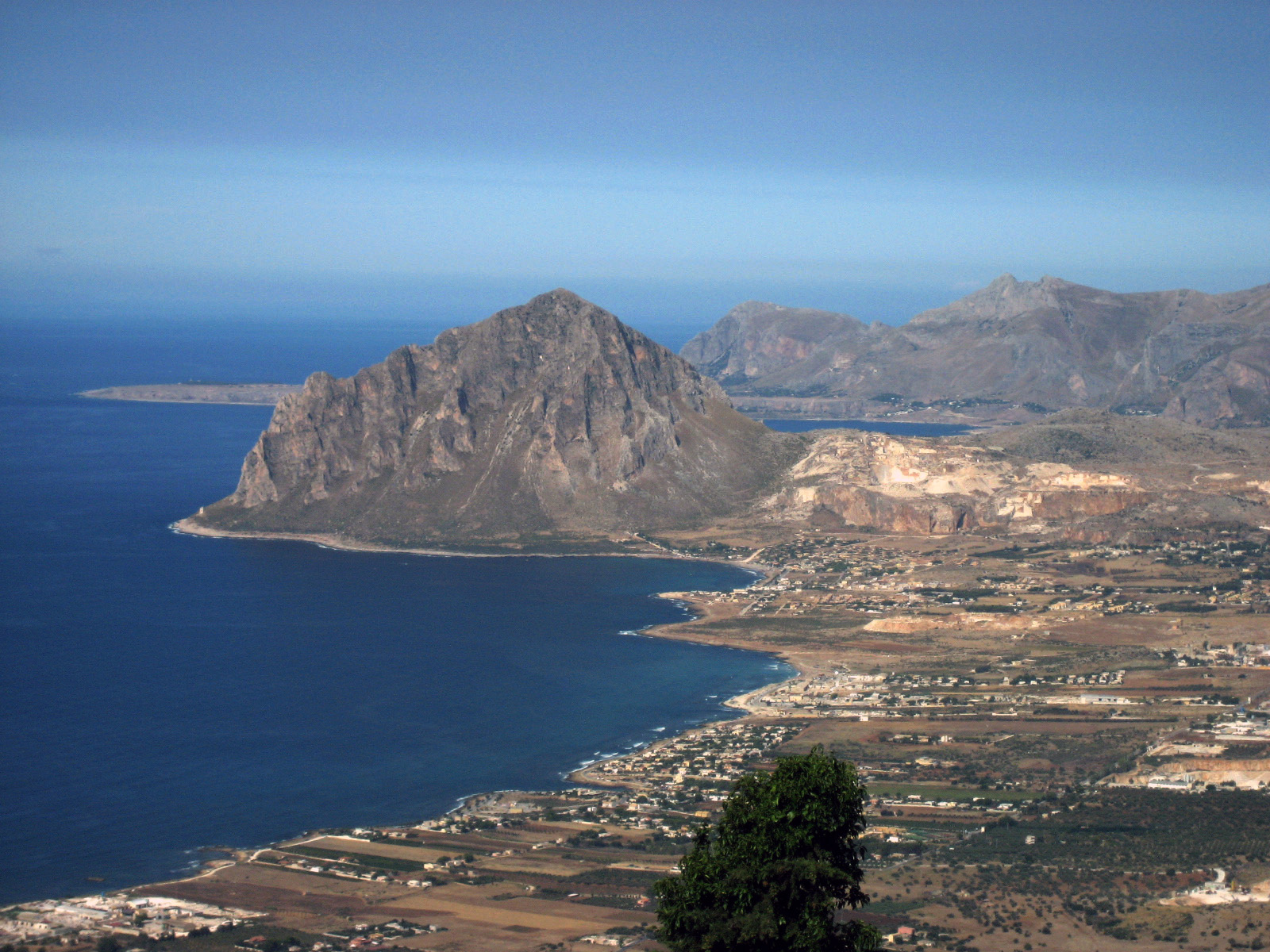

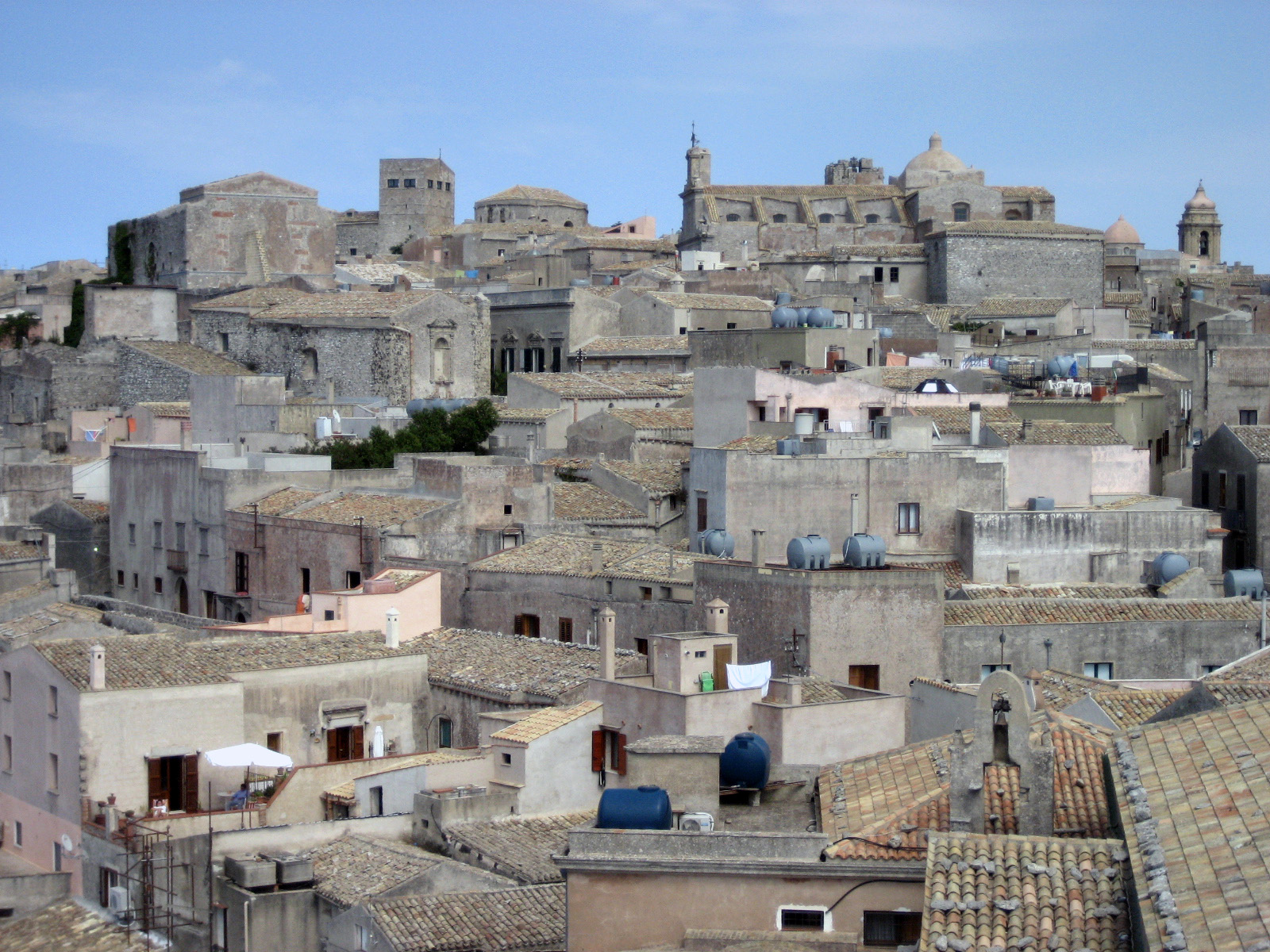
You must be logged in to post a comment.